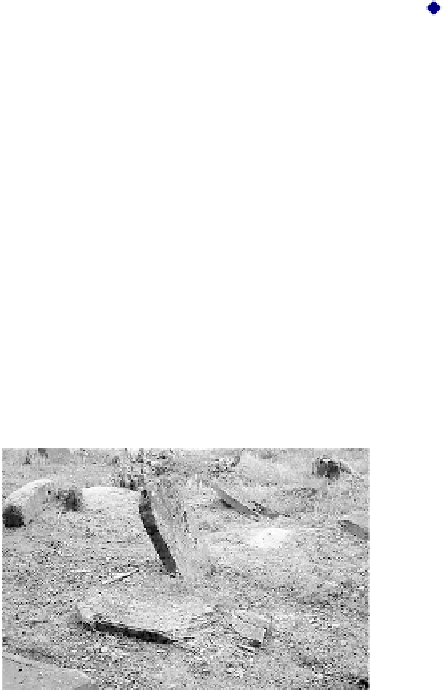Environmental Engineering Reference
In-Depth Information
8.2.2.
Hydric and hygric properties
Stones may contain quite important proportions of water-swelling clays (see
Figure 8.3) This is the case with Sander sandstone, which was used as a building
material for the construction of Ursulines cloister in Wurzburg, Germany [SNE 96],
and Alsace, France, where it was used to make tombstones (see Figure 8.4).
Sandstones are not the only lithotypes showing such a behavior. Tuffeau chalk [DES
00] and marble-like Sampans limestone respectively used in Loire castles and for the
decoration of the Garnier Opera facade in Paris [PFL 98], are two examples of such
stones.
4500
4000
3500
3000
2500
2000
1500
1000
500
0
MIG
ANR
TUF
WUS
SAN
ABT
SAM
Figure 8.3.
Average hydric dilatation of some stones: MIG = Migné limestone
(calcite>98%); ANR = Anröchter green sandstone (calcitic binder); TUF = Tuffeau (silica-
bearing chalk with 50% calcite and 9% clay minerals); WUS = grès de Wüstenzeller
sandstone (silica and clay binder); SAN = Sander sandstone (clay binder); ABT = Abtswinder
binder (clay binder); SAM: Sampans marble-like limestone (clay bearing veins).
[SME 96] ANR, WUS, ABT; [DES 00] TUF; [SIM 98] MIG; [PFL 99] SAM
Figure 8.4.
Scaling along bedding planes (delamination) of molasse tombstones in an
Alsatian cemetery, Hagenthal, Haut-Rhin, France






